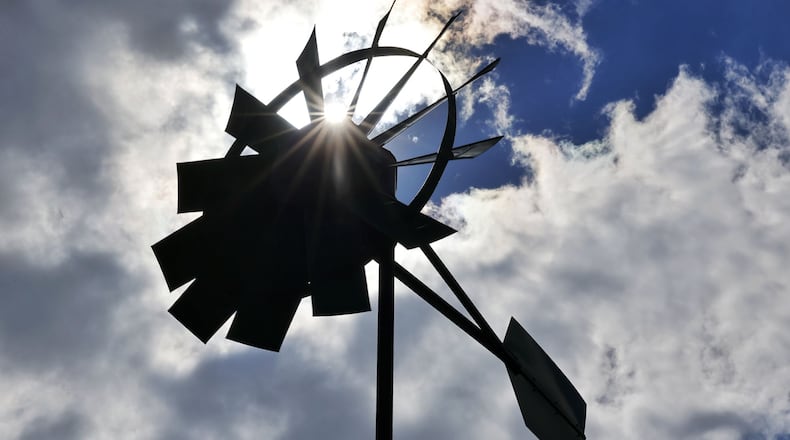“This is our future,” Meyers said, adding people may want to make a political issue out of sustainability, but “it’s the exact opposite in my mind. What you show in the 100 action items is building efficiency into the system for our taxpayers while establishing quality of life. You continue to do that.”
Meyers and councilmember Gwen Brill nearly two years ago charged city staff to develop a forward-thinking sustainability plan with priorities, goals, strategies and action steps. What was presented last week to council in a work session was beyond what they asked for, both council members said.
Credit: Nick Graham
Credit: Nick Graham
The plan lays out a roadmap of how Fairfield can provide “superior quality of life for all residents and businesses,” said Planning Manager Erin Lynn, who led this project with Public Utilities Director Adam Sackenheim. Additionally, she said it “it’s a comprehensive strategic roadmap that addresses environmental, economic, livability considerations, as well as being a catalyst for quality of life improvements for residents.”
And above all, Lynn said, “This is an action plan. We intend to implement the recommendations from this plan.”
It will take years to implement the steps outlined in the plan, which, among other things, calls for making the city more transit-friendly, walkable and bikeable; increasing renewable energy and energy efficiency; reduce waste, increase recycling, and encourage water conservation; and preserve green space and parks and protect natural systems and resources.
Some of the goal timelines, however, are only a few years away, such as by 2030 increasing waste reduction and diversion by 10% and by 2026 conduct a municipal solar feasibility study to evaluate potential and practicality of installing solar panels on municipal-owned or operated buildings and in parks.
“This really maters,” Sackenheim said.
He recently attended the One Water Ohio state conference in Sandusky and said “there was a lot of focus on greater sustainability” and “attracting the next generation of homeowners and residents.” He said what was important to the Baby Boomer generation in terms of career path, quality of life and a work-life balance differs from later generations, like Gen X and Millennials.
“The further you go on that scale, the more of this stuff (sustainability) becomes important,” he said. “People have the opportunity to work remotely, work from home. They want to be in a community that is aligned with their beliefs.”
As time moves on, Sackenheim said, “I think it’ll be more impactful in the future than it is today.”
About the Author


